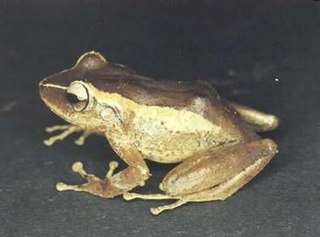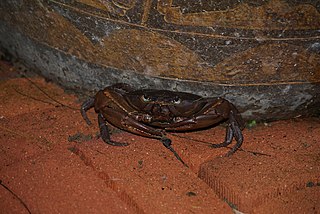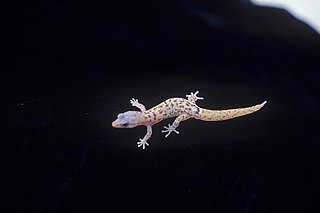 W
WAmphisbaena schmidti, known commonly as Schmidt's worm lizard or the Puerto Rican dusky worm lizard, is a species of amphisbaenian in the family Amphisbaenidae. The species is endemic to the Caribbean.
 W
WAnolis cuvieri is a species of lizard in the family Dactyloidae. The species is endemic to Puerto Rico, and is common in the Toro Negro State Forest.
 W
WAnolis poncensis is a species of lizard of the family of Dactyloidae. The species is endemic to Puerto Rico. It was first identified in Ponce, in the hills three miles east of the city. The Puerto Rico Department of Natural and Environmental Resources considers it a "vulnerable species".
 W
WAnolis roosevelti, also known commonly as Roosevelt's giant anole or the Culebra Island giant anole, is an extremely rare or possibly extinct species of lizard of the genus Anolis in the family Dactyloidae. The species is native to the Antilles.
 W
WChilabothrus inornatus, until recently known as Epicrates inornatus, is a large species of boa; this snake is only found on the island of Puerto Rico. It is locally known most simply by the common names of culebrón, which basically means 'big snake', or more specifically as the boa puertorriqueña. For publications in English either the names Puerto Rican boa or yellow tree boa have been promoted, although it is not yellow, nor does it live in trees: it is a terrestrial snake with a dark brown coloration. It grows to 1.9 m (6.2 ft) in length. It feeds on small mammals such as rodents and bats, birds and sometimes anole lizards. Like all boas, it is viviparous and kills its prey using constriction, squeezing its victims to death.
 W
WThe bronze coqui, Richmond's coqui, coquí caoba, or coquí de Richmond is a species of frog in the family Eleutherodactylidae. The specific epithet, richmondi, is dedicated to Dr. Charles W. Richmond.
 W
WThe common coquí or coquí is a species of frog endemic to Puerto Rico belonging to the family Eleutherodactylidae. The species is named for the loud call the males make at night. This sound serves two purposes. "CO" serves to repel males and establish territory while the "KEE" serves to attract females. Since the auditory systems of males and females respond preferentially to different notes of the male call, this is an example of a sex difference in a sensory system. The common coquí is a very important aspect of Puerto Rican culture, and it has become an unofficial territorial symbol of Puerto Rico.
 W
WThe cricket coqui, green coqui, or coqui grillo is a species of frog in the family Eleutherodactylidae endemic to Puerto Rico. Its natural habitats are subtropical or tropical moist lowland forest and subtropical or tropical moist montane forest.
 W
WThe dwarf coqui or elfin coqui is a species of frog endemic to Puerto Rico. It is placed in the subgenus Eleutherodactylus.
 W
WEleutherodactylus juanariveroi, the Puerto Rican wetland frog or, is an endangered species of coqui, a frog species, endemic to Puerto Rico. It was discovered in 2005 by Neftalí Rios, and was named after Puerto Rican herpetologist Juan A. Rivero, in honor of his contributions to Puerto Rican herpetology. It is only found in the old Naval Base of Sábana Seca in Toa Baja, Puerto Rico. It is characterized by a high-frequency, chip-like sound, a light-brown skin color, and a strip between the eyes. It is the smallest species of coqui.
 W
WEleutherodactylus portoricensis is a frog native to Puerto Rico that belongs to the family Eleutherodactylidae. Its vernacular English names are upland coqui, mountain coqui, and Puerto Rican robber frog. It is found in the Toro Negro State Forest and other similar mountainous regions.
 W
WEneida's coquí is a species of coquí, a small variety of frog endemic to the main island of Puerto Rico and its archipelago. Known as coquí de Eneida in Puerto Rico, this amphibian is mainly terrestrial. Its average adult size is from 1.0 to 1.2 inches. It has a number of small warts located across its back and eyelids. Its main color is a light tone of greenish or grayish brown with a yellow tint on its underbelly. They often have a pair of light colored concave lines located on their backs. Their eyes are golden or green colored, generally dark colored with black venal reticulation. Its habitat is located in mountains that are 1,000 to 3,000 feet above sea level. This species seems to have suffered a population reduction, in the process disappearing from areas formerly considered its natural habitat. The reason behind this reduction is under study, and Eneida's coquí has been designated an endangered species until the cause is discovered. This population decrease is not considered to be linked with the loss of its habitat, which has prevented the protection of its habitat.
 W
WEpilobocera sinuatifrons is a freshwater crab of the family Pseudothelphusidae. It is one of the most abundant predatory freshwater decapods in the freshwater streams of Puerto Rico. The species is widely distributed in streams of Puerto Rico and the U.S. Virgin Islands. It is endemic to Puerto Rico.
 W
WThe grass coqui or coqui de las hierbas is a species of frog in the family Eleutherodactylidae, endemic to Puerto Rico. Its natural habitats are subtropical or tropical moist lowland forest, subtropical or tropical moist montane forest, subtropical or tropical seasonally wet or flooded lowland grassland, plantations, rural gardens, and heavily degraded former forest. It is threatened by habitat loss.
 W
WHedrick's coqui, the treehole coqui, or coqui de Hedrick is a species of frog in the family Eleutherodactylidae endemic to Puerto Rico. Its natural habitats are subtropical or tropical moist lowland forest and subtropical or tropical moist montane forest.
 W
WThe melodius coqui or coquí melodioso is a frog species in the family Eleutherodactylidae endemic to Puerto Rico. Its natural habitats are subtropical or tropical moist lowland forest and subtropical or tropical moist montane forest. It is threatened by habitat loss.
 W
WThe Mona coqui,, Eleutherodactylus monensis, is a species of frog in the family Eleutherodactylidae endemic to Mona, Puerto Rico. Its natural habitats are subtropical or tropical dry forest and subtropical or tropical dry shrubland.
 W
WThe Mona ground iguana is a rock iguana that is a subspecies of the rhinoceros iguana. It is endemic to Mona Island, Puerto Rico and is the largest native terrestrial lizard in Puerto Rico.
 W
WThe Monito gecko is a lizard, a species of gecko endemic to the island of Monito, in the archipelago of Puerto Rico.
 W
WThe Puerto Rican nesophontes, or Puerto Rican shrew, is an extinct eulipotyphlan endemic to Puerto Rico.
 W
WThe Puerto Rican rock frog, Eleutherodactylus cooki, also known as the Puerto Rican cave-dwelling frog or rock coqui, and locally as coquí guajón, or guajón for brevity, is a threatened frog species from the coqui genus. This unique species of tropical frogs dwells primarily in crevices and grottos in the Cuchilla de Panduras mountain range in southeastern Puerto Rico. The native name guajón is derived from its habitat, guajonales, which are caves formed by rock formations between huge stones. Despite being the state animal and considered emblematic of the region, of the 17 species of coquí, three are believed to be extinct and the rest are rare and declining in numbers. The Puerto Rican rock frog is extremely restricted in geographical distribution. The frog is threatened due to deforestation, agricultural, rural, and industrial development, and the associated infrastructure. It is sometimes called the “demon of Puerto Rico" because of its eerie call and phantom-like appearance. The species was first described by American herpetologist, Chapman Grant in 1932.
 W
WThe web-footed coqui, stream coqui, Puerto Rican stream frog, or Karl's robber frog, Eleutherodactylus karlschmidti, is a possibly extinct Puerto Rican frog species in the family Eleutherodactylidae. It was first described by Chapman Grant in 1931, and was named after herpetologist Karl Patterson Schmidt. It is the largest Eleutherodactylus species of Puerto Rico.